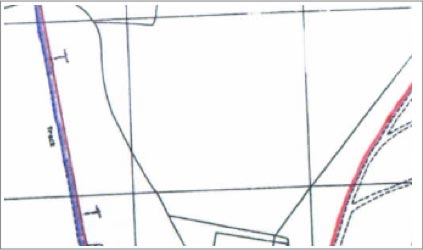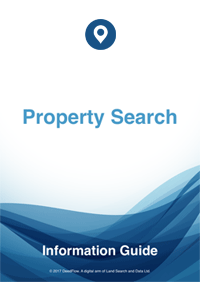Solving Boundary Problems using a Deed Plan
Article Summary
This article highlights how a Deed Plan can solve a boundary dispute simply by supplying copies of the Associated Documents and Deed Plans, or a Boundary Search which contains them together with other useful Land Registry documents. The article highlights a boundary dispute and the T Mark information obtained from the Deed Plan, which provided a solution to the dispute.
The Problem
The property boundary between A's land and B's land contained a long fence that had fallen into dis-repair. B told A that the fence was jointly owned and that he would like A to contribute one-half of the cost to repair it. The fence was more than a hectare in length and quotes from fencing contractors were very expensive.
Boundary Search
A applied for a Boundary Search. This included the Title Registers and Title Plans for each property, but it was difficult to construct any useful detail from them. Also included with the Search were the Associated Documents for each property. One of the Associated Documents for B's property made reference to ownership of the fence and there was a Deed Plan attached to it.
Conveyancing Deed
The Conveyancing Deed contained the following clause:
FENCES: To maintain repair and (if necessary) renew walls fences or hedges on or within the boundaries of the property in the position marked with an inwards "T" on the Plan."
The Plan referred to was a Deed Plan, and a copy of the Deed Plan was attached to the Deed, illustrating the T marks.
Deed Plan
A Deed Plan is not the same type of document as a Title Plan. They each serve a different purpose. The purpose of a Title Plan is to illustrate the approximate boundaries of the property, edged in red, in relation to the surrounding properties. Statute bars the red edging from being any more than a general guide as to the boundary positions (s60 Land Registration Act 2002), unless the boundary has been determined by the owners and officially approved by the Land Registry.
The purpose of a Deed Plan is to describe the property being sold or transferred, often following a sale of part of the property. The Land Registry will normally create the Title Plan from a Deed Plan, but do not generally include T marks on it.

Solution
Upon A showing B the Conveyancing Deed and Deed Plan (to his own property) with the T marks clearly illustrated, there was no longer any logic in disputing his liability to maintain, and B reluctantly accepted his responsibility for sole maintenance thereof.
Boundary Search 2 Properties
Obtain all the available property documents held to help resolve common boundary problems. For 2 Adjoining Properties.
£99.95Boundary Search 3 Properties
Obtain all the available property documents held to help resolve common boundary problems. For 3 Adjoining Properties.
£146.95Boundary Search 4 Properties
Obtain all the available property documents held to help resolve common boundary problems. For 4 Adjoining Properties.
£193.95


